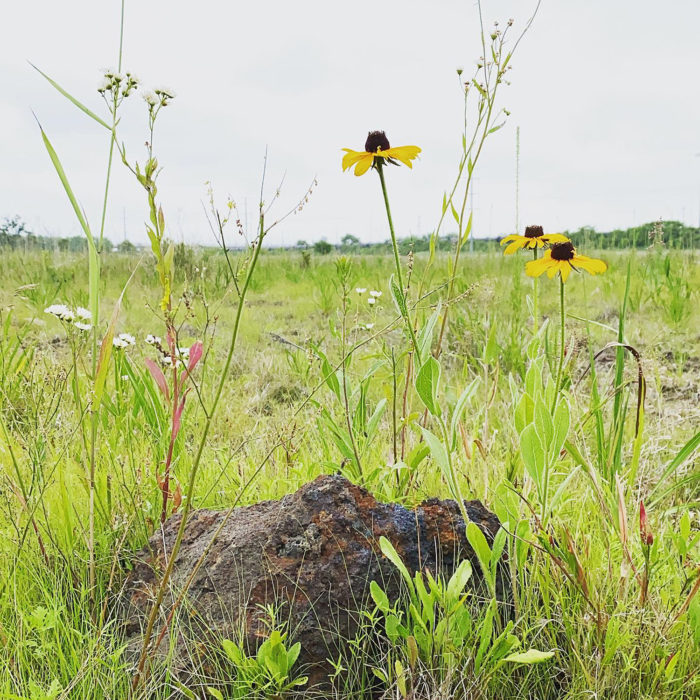Industrial redevelopment and decay has altered many of our natural spaces beyond recognition.
The steel industry forever changed the Calumet, Illinois region’s landscape and caused the degradation of the hemi-marsh wetlands habitats of many native plants and wildlife. Formerly a shallow, postglacial lake draining into Lake Michigan, a combination of development, pollution, change in climate and hydrology resulted in the disappearance of plants and wildlife that contributed to the region’s biodiversity.
As the steel industry grew, starting in the late 1880s, the more Lake Calumet was filled in with slag for more steel mills and land for the housing of workers and the growing communities of South Deering. As the mills eventually closed or left the southeast side during the mid-20th century and plunged the local economy into depression causing a mass exodus of Black and Brown people from their communities.
With this mass exodus, economic depression, on-going disinvestment, there has now been an effort to rehabilitate and restore sites filled with slag (waste from the steel industry) and other extremely hazardous waste dumped illegally in the South Deering community. Several sites around Lake Calumet have been designated a Superfund site by the EPA as of 2010.
Greyfield is a term for “underused” real estate, coming from the “sea” of empty asphalt and concrete that often accompanies these sites. With Return and Recovery, sound artist Norman W. Long gives us a layered version of Illinois’ Calumet Region’s soundscape, featuring field recordings from Big Marsh, a greyfield site on the southeast side of Chicago, sounds of animals on the Illinois Endangered Species list and sounds from a sonified data set from USFWS Threatened & Endangered Species Active Critical Habitat Report.
Big Marsh is bounded by the Norfolk Southern Railroad to the east, 116th Street and the Paxton Landfill to the south, Stony Island Avenue to the west and 110th street to the north. These railways and roads lead to smaller manufacturing sites and ports that still line the shores of Lake Calumet.
As we see the City of Chicago working to rehabilitate the land for cleaner soil, water and air, we see wildlife coming back to the area. Stated in the Park 564 Big Marsh Framework 2014 Plan, “Ecological restoration onsite will focus on three categories: wildlife habitat improvements, vegetative community improvements and water quality improvements. All three categories are interrelated and necessary for the long term ecological and environmental health of Big Marsh.”
What I have observed is that if we can create ecological conditions to bring back a biodiverse ecology perhaps we can create conditions to bring back an economy that benefits the people and wildlife living here.
Commissioned for Citizen Animalia exhibition at Columbia College’s Glass Curtain Gallery, curated by Mark Porter, Return and Recovery allows the listener to re-examine the complex relationship between us humans and our fellow members of Kingdom Animalia.
read an interview with Norman W. Long on Foxy Digitalis
+
read a feature on the work of Norman W. Long on Bandcamp Daily
+
read an feature/interview with Norman W. Long on Chicago Tribune


